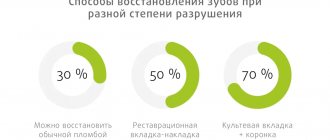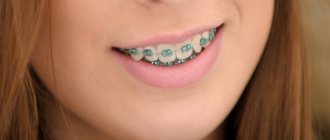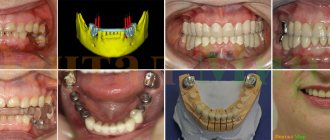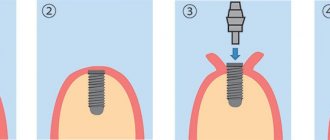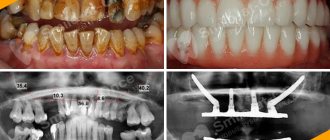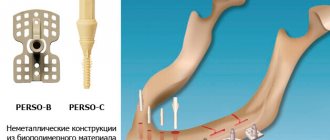1442
Dental implants are one of the ways to restore the functionality of the dentition, both with partial and complete edentia. They can be used when other types of prosthetics do not provide the desired effect.
By using hypoallergenic materials and improving the thread and shape, manufacturers bring the parameters of the artificial root closer to the natural one.
The implant manufacturer Snucone has achieved serious results in this regard, which ensures the survival of the structure in almost 100% of cases.
Background
Initially, the South Korean company had the name “Jin-Heung ACE corp.” It was founded in 1997.
Since 2005, the company has been collaborating with German colleagues in the field of implantology. After that, by 2008 it changed its name to Snucone, under which it gained popularity among European countries.
Licensing in Russia took place only in 2015, but thanks to reliability and reasonable prices, the Snucone product line quickly spread and became popular among practitioners and the public.
Rehabilitation after implantation
We have already seen that implantation is a serious surgical operation. Therefore, after it the patient will need to go through a recovery stage. Fortunately, Snookon implants are installed with minimal trauma to the gums and bone, so recovery is usually easy.
In the first few days, the patient may experience pain, the gums become swollen and red. The dentist prescribes antiseptic rinses, painkillers and anti-inflammatory drugs, and cold compresses. If you follow the doctor’s recommendations, then after 3-4 days the pain will completely disappear and the swelling will subside. The recommendation is written in the passport that the patient receives after implantation.
But this will not be the end of rehabilitation. In order for the body to recover, within a week after the procedure you should not:
- Taking hot baths, going to the sauna and bathhouse, sunbathing in the open sun - due to high temperatures, wounds heal worse, bleeding may open and inflammation may develop.
- Subject the body to strong physical stress.
- Brush your teeth intensively in the area where the implant is installed.
Also, it is not recommended to chew solid food (nuts, crackers, etc.) while wearing the temporary crown.
Design features
To ensure good survival of the screw rod, the manufacturer uses the latest technologies, which are the result of 20 years of experience.
At the same time, she herself develops technologies for the production of titanium alloys, controlling the concentration of carbon, nitrogen and oxygen.
Features when installing Snucone dental structures.
| Serial number | Technological parameters | Short description |
| 1 | SLA surface | To ensure a porous surface, the Grade 4 titanium rod is coarsely sandblasted and then acid etched. This technology increases biocompatibility, which significantly speeds up the implant healing process. |
| 2 | Microdesign | The use of double self-tapping threads reliably fixes the implant, minimizing traumatic bone damage. At the same time, the implantation procedure is halved. The square profile of the screw rod prevents increased pressure on the bone tissue. |
| 3 | Morse cone | Any Snucone model has an elongated cone, which prevents infections from penetrating deep into the bone tissue. This is an important point in preventing the development of unpleasant odor from the oral cavity. |
| 4 | Possibility of subcrystal installation | This technology involves the implantation of an artificial rod with complete insertion into the bone. This technique prevents the possibility of resorption (the process of degradation and destruction) of bone tissue. |
| 5 | Application of Lindemann cutter | It ensures rapid drilling of the jaw bone without causing overheating, which avoids necrosis of the bone tissue. The use of a cutter does not cause much discomfort in the form of pain. |
| 6 | Torque wrench | Torque force prevents traumatic damage to the jaw row. This will help avoid situations where the rod is screwed in weakly, or, on the contrary, causes excessive pressure on the jaw bone. |
It should be borne in mind that a combination of innovative technological solutions increases the speed of engraftment of dental structures. Snukon implants provide a survival rate of 98% of cases, while some brands have a rate not exceeding 93%.
Advantages
The main idea of the Korean Snucone implants is to combine the advantages of dozens of other implantation systems in one design. When the company signed an agreement with German specialists in 2005, it received the opportunity to use several technological innovations. Thanks to this, Snucone implants have the following advantages:
- Survival rate in 98% of cases . Such a high percentage was confirmed during a five-year study at the Department of Oral and Maxillofacial Surgery in South Korea, that is, this is not a theoretical, but a very specific figure.
- Long service life . Clinical observations show that Snukon implants behave absolutely stably, without causing changes in surrounding tissues for ten years or more.
- No inflammation . The most common cause of implant failure is bacteria entering the jawbone. Thanks to the special connection between the implant and the abutment (the connecting link between the implant and the crown) in Snucone designs, the chance of inflammation is reduced to almost zero.
- Stable immediately after installation . Due to the tapered design, when placed in soft bone, it is compacted, thereby achieving primary stabilization. It can usually be replaced with a temporary crown immediately, so you never have to go a day without a tooth.
- Quick installation . Due to the fact that the implants have a double thread, rapid and non-traumatic immersion into the bone occurs.
- Affordable price . There are many more expensive systems on the market, but Snucon implants are in no way inferior to them, and at the same time keep the price at an affordable level due to a special South Korean approach to production.
Question to the dentist : For which clinical cases are Snukon implants best suited?
Snucone implants can be used in any clinical cases, thanks to the availability of implants of different designs in the arsenal.
For example, in the posterior part of the upper jaw, where the maxillary sinus is located, there is often little bone in height and it has a loose structure, so traditional implants cannot be installed without bone augmentation. Snucone specialists have developed short implants with a unique design that are easily fixed in such conditions and show excellent results.
If the width of the jaw bone is insufficient, the ridge splitting technique is often used, in which implants are simultaneously installed.
When using conventional aggressive implants, the bone often breaks and causes complications. Conical implants created by Snucone can be placed completely safely in clefts, maintaining the integrity of the bone walls and achieving excellent stability.
The most common complication of implantation is bone destruction at the neck of the implants. The neck is the part of the implant located closer to the surface of the bone. Destruction occurs due to a lack of bone volume in this area, so when installing implants, bone is often built up. In such operations, it is definitely important that the bone material is firmly fixed in the area of the implant neck. This important factor is also taken into account by Snucone specialists. The taper and smooth design of the neck of the implants allow the bone to be retained in this area and its growth to be achieved.
Positive and negative points
The main advantages of this model range are the following qualities:
- Slight risk of possible rejection. According to statistics, designs take root in 98% of all cases.
- Long service life. Proper care and periodic dental examinations ensure comfortable wearing for more than 10 years.
- Minimal chance of developing inflammatory processes due to the complete covering of the implant insertion site by the abutment.
- Complete implantation into the jaw prevents destruction of bone tissue , and evenly distributes the load during the act of chewing.
- The products can be used in completely edentulous teeth.
- Low cost compared to similar designs from other brands.
The negative aspects include the limited information on statistical data. This is due to the fact that these products have been used in Russia only for the last 10 years.
Also, for a certain category of the population, the price of the Snukon orthopedic product can cause financial difficulties.
The best models of Denti System implants and their purpose.
Come here if you are interested in the features of Green implants.
At this address https://www.vash-dentist.ru/implantatsiya/proizvoditeli/assortiment-radix-belorussii.html you will find objective reviews about Radix implants.
What are Snucone implants?
Implants have long become convenient and safe, but problems with survival still persist. Dentists strive to achieve maximum speed of bone formation, excellent fixation, reduced pressure on the bone - in general, maximum naturalness. Therefore, the appearance of Snucone implants was inevitable.
These implants were developed jointly by Koreans and Germans. They combine European quality and Korean desire for new technologies. With German pedantry, the implants were tested before being put into production, and continue to be examined now for the presence of foreign impurities and other defects in the design.
Now let's proceed directly to discussing their design features that distinguish these implants from others that previously existed.
Overview characteristics
To prevent the Snukon dental structure from being rejected after installation, manufacturers have developed 2 series of products that are used depending on bone density, providing an individual approach to each patient.
For this purpose, models of the following designs are used:
- Abiding Fixture Plus I (AF+I);
- Abiding Fixture Plus II (AF+II).
Implants of the Abiding Fixture Plus II (AF+I) series
This titanium series, due to its characteristics, is most often used for lower jaw prosthetics (due to the softness of the bone tissue). The length of the product ranges from 7 to 14 mm. The diameter does not exceed 4 mm.
Based on the indications for prosthetics, the following are used:
- Narrow products AF+I 3.5 and AF+I 4.0. Used to restore frontal incisors.
- The wide diameter of the structure (AF+I 5.3, AF+I 5.8, AF+I 6.3 and AF+I 6.8) is recommended for installation in the absence of molars.
The advantages of this series include:
- almost complete preservation of the cortical bone, which increases the quality of aesthetic parameters and extends the service life of the product;
- the conical shape of the rod in combination with the thread cut gently splits the alveolar ridge without causing additional damage;
- On molars, immediate implantation is possible.
Abiding Fixture Plus II (AF+II) model series
Used for increased bone density. Their length does not exceed 14 mm, and their diameter reaches 4.8 mm.
Features of this series include:
- After implantation into the mandibular row, the load on the structure can be increased after a six-week period. For the upper jaw this period is 10 weeks.
- Immediate loading may be applied if a screw rod with a rectangular thread section has been used.
- The absence of a threaded surface in the upper part of the implant does not allow the penetration of bacterial pathogens, and helps to evenly distribute the load on the cardial part of the bone.
The undoubted advantage of both series of the Snukon model range is the ability to carry out the installation procedure using 2 methods:
- Two-stage. The procedure for implanting a titanium rod involves initial removal by a dental unit, followed by installation of the structure after the hole has healed.
- The use of a one-stage protocol allows the implant to be inserted immediately after removal of the root system of the tooth.
This option has a number of limitations and requires the specialist to carry out the tooth extraction procedure as carefully as possible, avoiding significant damage to the bone, socket and gingival surface.
The video shows the process of installing Snucone implants using a one-step protocol.
We use the latest implantation technologies
If you are planning to undergo dental implantation and you are still looking for the optimal option for implantation systems, then Valadent dentistry advises you to pay special attention to Snucone implants with an SLA surface. Our specialists practice this technology, so they can not only tell you about it in detail, but also professionally install these implants. If you value quality and reliability above all, then Snucone implants with SLA surface are definitely for you!
Cost of implants
Discounts and Promotions
Indications and contraindications
The procedure for installing an artificial root made of titanium alloy will be relevant in the following cases:
- in the complete absence of all dental units (edentia);
- when several teeth were removed in a row in one row (it is possible to establish a bridge connection);
- if there is a need to implant an implant simultaneously with part of the bone plate;
- when one tooth is lost (so as not to grind adjacent units);
- if it is necessary to install a removable prosthesis.
The patient’s desire to install an implant is not always possible, since there are a number of restrictions that arise in the following situations:
- if there is a serious malfunction of the heart muscle;
- when a patient is diagnosed with diabetes mellitus and oncological pathologies;
- diseases of the central nervous system, and situations when a person has a pathological addiction to alcohol or uses drugs;
- lack of sufficient bone tissue;
- a complex form of abnormal bite, due to which there is an increase in abrasion of the surface enamel;
- night grinding of teeth during sleep (bruxism);
- jaw defects of various origins (after injuries, osteomyelitis, syphilis or tuberculosis);
- in the absence of sanitation of carious cavities.
How is implantation performed using the Snucone system?
Implantation is a full-fledged surgical operation, although visually it seems insignificant. It requires lengthy preparation and consists of several stages.
Preparation for implantation
It all starts with the first visit to the dentist. The patient, together with the doctor, selects the appropriate type of implantation; the doctor takes an x-ray and selects implants based on the condition of your bone tissue. Also at this stage, the patient is sent for tests to make sure that he does not have HIV, diabetes or other serious diseases in which implantation is contraindicated or must be performed with extreme caution.
After the implantation technique has been chosen, it is necessary to sanitize the oral cavity - fill carious teeth, relieve gum inflammation, etc. This is necessary to ensure that there are no pockets of inflammation in the mouth, bacteria from which can adversely affect the implant’s healing.
The duration of this stage depends on the condition of the oral cavity and can take either a week or a month.
Bone grafting
This is an optional, but often necessary stage of implantation. The fact is that if a tooth is lost a long time ago, the bone tissue gradually decreases. As a result, the bone becomes too thin - there is simply no room left for the implant. To create the required volume of bone, you have to replant it separately. In some cases, bone tissue growth can take 3-4 months - and during this time you will have to walk without implants.
Snucone implants sometimes allow implantation to be performed simultaneously with bone grafting, such as a sinus lift (bone grafting in the upper jaw) or ridge augmentation (splitting) (if the bone is too narrow).
The implantation itself
Implantation itself is the shortest stage, which takes only 30-60 minutes. It is divided into several more separate steps:
- The patient sits in the dental chair, the doctor gives him anesthesia. Modern anesthetics allow you to completely avoid pain during implantation.
- The doctor makes a puncture on the mucous membrane, then drills out the bone using the drill included in the kit.
- An implant is implanted into the resulting hole.
- If necessary, several implants can be installed during one operation. The gum is sutured to stop bleeding.
- Abutments or gum formers, and sometimes temporary crowns, are installed on the implants.
After the procedure, the patient can go home immediately.
In some clinics, implantation is done using surgical templates. These are special overlays for the patient’s jaw, in which holes are made for implants. The onlays are made based on a computer model and allow you to install the implants as accurately as possible and at the desired angle.
Question for the dentist : How long does implantation take using the Snucone system?
The operation to install one implant takes on average 20-30 minutes. To a large extent, this depends on the precise planning of the operation. Before implantation, it is important to undergo X-ray diagnostics - take a panoramic image or computed tomography and accurately calculate the direction of implant installation, as well as select the correct diameter and length of the implant, assess bone density and select an implant of the required design. And of course, the speed and success of the operation depend on the experience and manual skills of the surgeon.
Implant healing
This is more likely not a stage, but a forced pause in implantation. During the healing period, the patient can walk with a temporary crown and lead a normal life, periodically visiting the dentist for examination. The stage lasts 3 – 4 months depending on the condition of the patient’s bone.
Question to the dentist : Is it possible to use Snukon implants in one-stage and one-stage implantation?
Immediate is the immediate installation of an implant into the socket of an extracted tooth. Typically, this technique is used in the anterior part of the jaws, where there is a need for one-stage prosthetics with a temporary crown. Snukon engineers have developed implants for installation in the socket of extracted teeth. They have a tapered shape and a specific thread design that allows for excellent implant fixation even with a small amount of bone. The rough surface of Snukon implants, similar to the bone structure, allows the implants to integrate quickly and predictably, including during immediate implantation, when the implant is fixed only at the tip, and its main surface does not have contact with the bone.
Prosthetics
When the implant has completely taken root in the jaw, it will no longer be possible to install a light plastic one, but a full-fledged prosthesis. To do this, the patient comes to the clinic, where impressions of his jaws are taken. After this, a crown is made in the laboratory, which is fixed to the implant with special cement.
When a permanent prosthesis is installed in a patient, the implantation can be considered completely completed. A person receives a full-fledged artificial tooth, which is visually and functionally no different from the real one.
Question to the dentist : How long do Snukon implants actually take to take root?
Since the bone has different densities in different parts of the jaws, the healing time of the implants is different. In the lower jaw, where dense bone is typically found, integration takes an average of 3 months, while in the upper jaw it takes 4.5 months due to the softer bone structure.
Question to the dentist: Is it possible to immediately install temporary dentures on them so as not to go without a tooth?
In aesthetically important areas, a temporary crown is installed on the implant immediately. Typically these are front teeth that require immediate aesthetic restoration.
It is also possible to place temporary crowns when three or more implants are combined. For example, when we install six implants on the lower jaw with complete absence of teeth, we immediately make a removable or bridge-like temporary prosthesis, fixing it on these implants.
Question to the dentist : What dentures can be placed on Snukon implants?
The Snukon system has orthopedic components that allow prosthetics to be performed in accordance with the highest world standards. The presence of titanium bases makes it possible to produce screw-retained crowns and avoid cementing the crown in the oral cavity, since the presence of cement residues on the surface of the crown or implant causes inflammation and tissue destruction. Components are also available to enable the production of individual abutments. An abutment is an intermediate link between a dental implant and the tooth crown. An abutment is called a custom one because it is made based on the shape of the gums around the implant. Such an abutment allows you to obtain an exact fit to the gum and avoid its sagging, ensuring long-term tissue stability.
Also, the Snukon system has all the necessary components that allow for high-quality prosthetics with removable and non-removable structures on implants.
Product service life
Manufacturers claim that the artificial root of the Snookon series can last 10 years, and in some cases this is not the maximum period.
The situation is different with the coronal part. If it is made of metal ceramics, then over time the facing part may darken or chips may appear on its surface. Usually it lasts no more than 5 years.
The use of a porcelain crown requires delicate care, otherwise its warranty period will not differ from that of a metal-ceramic product.
Models made of zirconium dioxide have increased strength (service life exceeds 10 years).
To increase the service life of the structure, it is necessary to clean its surface twice a day with hygienic paste, and after eating, use dental floss or rinses (elixirs). It is also recommended to visit the dentist twice a year.
It should be borne in mind that good survival rate (it is 98.1% on the upper jaw row, and 94.3% on the lower row), which ensures long service life, also depends on the skill and skills of the implantologist.
How Euroteknika implants are designed and the material used in production.
This article contains everything you need to know about Oraltronics implants.
Here https://www.vash-dentist.ru/implantatsiya/proizvoditeli/ihde-dental-novogo-pokoleniya.html we offer you a closer look at the Ihde Dental implant systems.
Price
In 2005, the INNO-BIZ certificate was received, which marked the merger of German and Korean.
A massive signing of contracts and licensing agreements occurred in 2011. After this, Snukon officially became widespread in Italy, China, Iran, Indonesia and Taiwan.
The last certificate update was carried out in 2014 (CE / ISO13485). During this period, products appear on the territory of Russia.
The entire line of designs from the Snucone series meets quality standards, which are:
- high survival rate;
- ability to eliminate cosmetic defects;
- provide functionality of the oral cavity;
- the possibility of subsequent use of removable prosthetics methods.
The cost of installing products will depend on many factors. This is influenced by the prestige of the dental institution, the city of Russia, as well as the qualifications and professional skills of the dentist.
Approximate cost of orthopedic structures from Snucone:
- Implantation of a single implant will cost 15,000 rubles (without the crown part).
- A zirconium dioxide crown has a maximum cost of 20,000 rubles. Metal ceramics will cost less (about 10,000 rubles).
- An individually made abutment will cost the patient from 20 to 30,000 rubles.
- If there is a need to increase the volume of bone tissue, a sinus lift operation will cause additional material costs (25,000 rubles).
If we compare with analogues of other dental brands, we can note that products from Nobel Biocare (USA) without a crown have a price of around 50,000 rubles. For a Swiss implant (Straumann Active), also without a crown part, you need to pay from 60 to 70,000 rubles.
The Snucone product line incorporates all the best. It inherited the high quality of products from the Germans, and South Korean manufacturers set affordable prices.
Most people who have experienced prosthetics using dental implantation have noticed the advantages of products from Snukon, since when installing them they should not overpay for the brand of famous companies.
Materials and methods
Research concept and sampling
To achieve the stated goals, the study conducted a retrospective cohort study on a sample of patients who, at the Dental Implantation Center of the hospital named after. Faulkner (Boston) between July 2001 and July 2003, Bicon implants with a conical connection were installed. During this time, 1331 implants were installed in 646 patients. The study included only all patients who underwent immediate prosthetics (within 24 hours after implantation) using a fixed temporary prosthesis. In the vast majority of cases, the temporary restoration was fixed on the day of implantation. In the absence of sufficient primary stability of the implants or conditions for fixation of the temporary prosthesis, immediate prosthetics were not performed.
Criteria for evaluation
Prognosis criteria were grouped into the following categories: 1. Demographic indicators: patient age at the time of implantation and gender.
2. Indicators of general health: tobacco smoking and conditions that impair wound healing (diabetes mellitus, long-term use of steroid hormones, radiation therapy of the head and neck, etc.).
3. Anatomical factors: implant location (upper jaw, lower jaw, anterior, lateral), dental status (partial or complete edentia), bone quality (type I–IV) and the relationship of the implant with other teeth or implants. Bone quality was determined at the time of implantation. The volume and appearance of bone in the grooves of the cutter were assessed during drilling.(9,10) The relationship of the implant to other structures was considered by categories: number of implants, number of endodontically treated teeth (ETT), number of teeth adjacent to the implant with an area of radiological rarefaction of bone tissue in apical region, preceding ELZ in the area of implantation.
4. Specific characteristics of the implant: implant size (diameter, length); implant coating, for example, without coating, with plasma sprayed titanium (PNT), with hydroxyapatite (HA) coating; diameter of the internal connection of the implant (see picture).
| Drawing. Abutment-on-abutment crown (IAC) and Baikon system implant |
5. Orthopedic factors: total number of natural teeth, total number of bridge pontics, total number of implants included in the temporary prosthesis.
6. Surgical factors included methods of jaw reconstruction at the implant site (eg, closed or open sinus lift), barrier membranes, autogenous bone grafts, allogeneic bone materials, timing of implantation relative to the time of tooth extraction (immediate or delayed).
7. Survival analysis. The following information was recorded: date of implantation, dates of follow-up visits, date of implant removal, if any.
Performance Indicators
Implantation failure was defined as loss of the implant. The time between implantation and the last visit (or implant removal) was used to determine the duration of implant survival in months.
Treatment protocol
The clinical treatment protocol required stabilization of the prosthesis by anchorage to adjacent teeth or implants during the osseointegration period. All lateral contacts were removed to prevent decementing. Below are the stages of the protocol.
1. Tooth extraction (if necessary) and preparation of the implant bed.
2. Adjacent teeth or crowns were etched for subsequent fixation of the prosthesis.
3. The implant was inserted so that the distance from it to the vestibular surface of the gum was at least 5.0 mm.
4. Selection of the optimal abutment.
5. Manufacturing, fitting and fixation of a temporary prosthesis.
6. For additional stabilization, the temporary denture can rest on adjacent teeth.
7. The temporary prosthesis can be removed after a minimum of 10 weeks of healing. Fabrication and fixation of the final prosthesis.(11)
Statistical analysis
The Microsoft Excel computer program was used to create the database. Data analysis and statistical analysis were performed using SAS software (SAS Institute). Descriptive statistics were calculated for all studied variables. One-year survival within 95% confidence limits was determined using the nonparametric Kaplan–Meier test. Factors associated with survival were identified using Cox proportional hazards marginal regression analysis based on semiparametric methodology used to determine group correlation. Cox proportional modeling allowed us to determine the combination of risk factors that negatively affect the outcome, for example, insufficient primary stability of the uncoated implant installed in the patient.
Reviews from patients and comments from specialists
Despite the fact that the Snukon company has just begun to conquer the Russian market of dental products, many positive reviews have been left about its product line, both among patients and from practitioners.
The low cost compared to other branded products causes approval among patients. And the design features and low rejection rate make them popular among practitioners.
You can leave your reviews and comments under the article.
If you find an error, please select a piece of text and press Ctrl+Enter.
Tags implantation implant manufacturers
Did you like the article? stay tuned
Previous article
Create a Hollywood smile quickly and inexpensively with Snap on Smile veneers
Next article
Purpose and types of dental sockets
